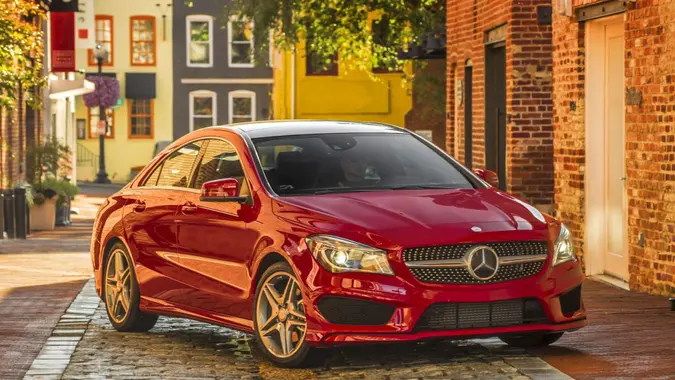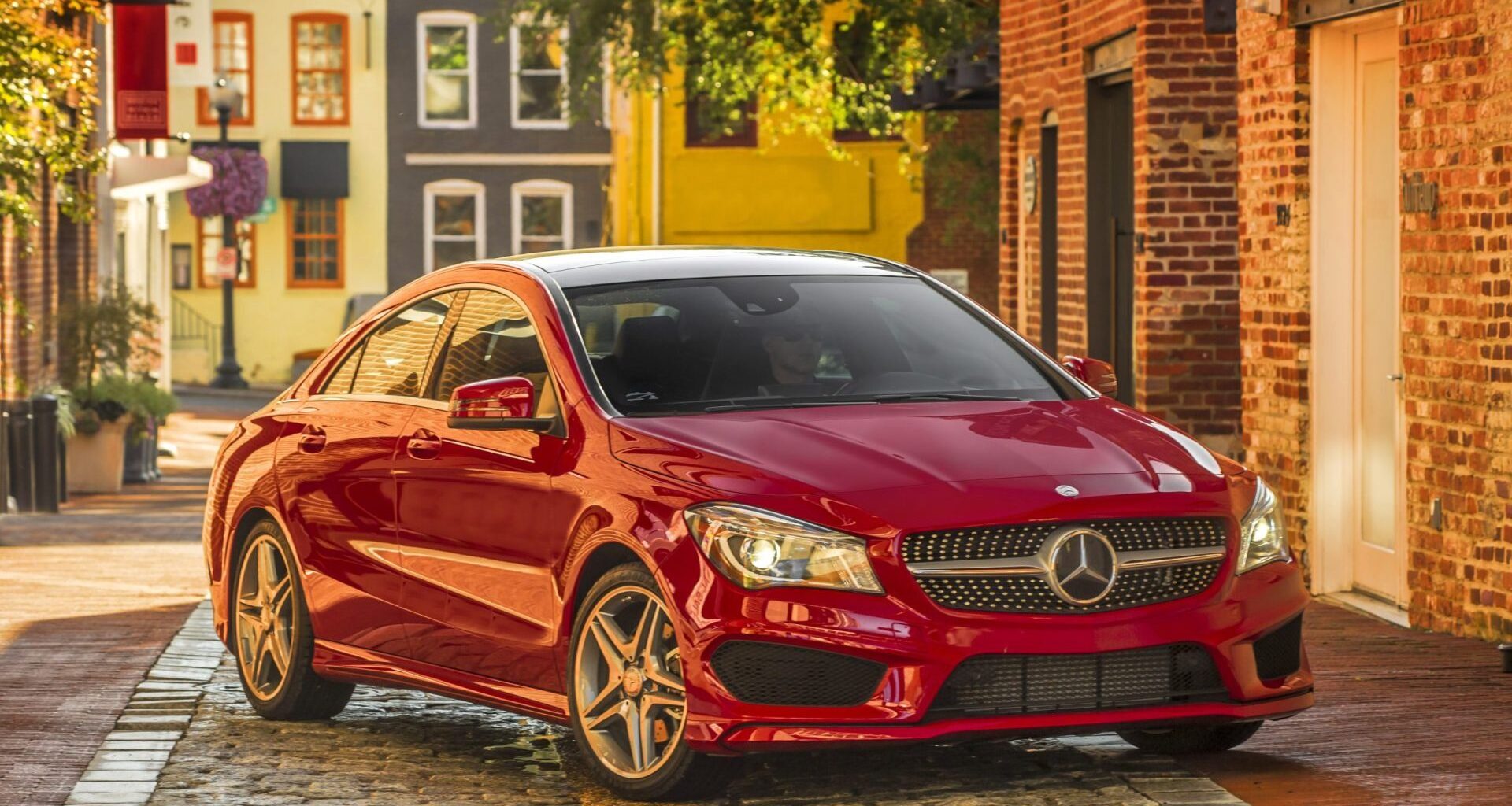
Mercedes-Benz / Wieck
Commitment to Our Readers
GOBankingRates’ editorial team is committed to bringing you unbiased reviews and information. We use data-driven methodologies to evaluate financial products and services – our reviews and ratings are not influenced by advertisers. You can read more about our editorial guidelines and our products and services review methodology.
20 Years
Helping You Live Richer
Trusted by
Millions of Readers
According to the Urban Institute, the number of Americans aged 65 and older expected to reach 80 million in 2040, this makes it increasingly important for retirees to have access to cars that offer accessibility, safety and comfort.
Owning a European car means enjoying performance and design — and for many Americans, a life of hard work deserves a driving indulgence in retirement. While senior drivers are looking for vehicles that prioritize the best of the features listed above, retirees are also looking for vehicles that fit their fixed income budgets. Here are five European brands retirees should stay away from.
Land Rover
From the strong and capable Range Rover to the sporty and sophisticated Evoque, Land Rover currently offers a variety of SUVs and crossovers. Retirees looking for a sturdy, reliable rider will be disappointed with the brand’s poor reputation. The brand has become known for producing SUVs with strong off-road capabilities but a reputation for frequent and costly mechanical issues, according to Consumer Reports, who ranked Land Rover No. 30 out of 32 brands overall and the most expensive to maintain and repair over 10 years.
Jaguar
Though now owned by India’s Tata Motors, Jaguar is headquartered in Coventry, England and has an identity still deeply rooted in its British origins. Models like the F-Type are popular among mid-lifers and retired drivers.
“It may be beautiful but it’s brutal on aging joints. Its low sill height and wide doors contribute to hip and wrist injuries during everyday ingress and egress, not just crashes,” said AutoJusticeAttorney.com’s Michael Gibson.
Mercedes-Benz
Mercedes-Benz is the embodiment of luxury, comfort and style, but those things come not only at a steep initial price, but high maintenance costs over the years. For example, it’s difficult to justify owning a Benz over a Toyota if you plan on sticking to a decades-long retirement plan. The average maintenance cost of a Toyota over a 10-year period ($5,503) is less than half that of a Mercedes ($12,962), according to CarEdge.
BMW
More BMW models than any other brand are included in CarEdge’s list of the top 20 most expensive cars to maintain. Over a 10-year period, you should budget at least $18,824 (for the X1) to $21,458 (for the XM) for maintenance if you own any of the X-series cars. According to RepairPal’s reliability survey, BMWs rank No. 30 out of 32 auto brands and require costly maintenance of $968 on average each year. Owning a BMW without warranty coverage or a substantial budget for repairs can be a costly experience, according to MotorBiscuit.
Porsche
Porsche isn’t the first choice of vehicle for those settling down after work comes to an end, but some retirees look forward to owning a brand with Porsche’s irresistible mix of luxury and speed. Porsche is one of the most successful car manufacturers in the world and is a market leader in the luxury and supercar segment, but buyer beware: RepairPal lists the average annual repair cost for all Porsche models at $1,192, which is 83% higher than the industry average for all vehicles ($652).
